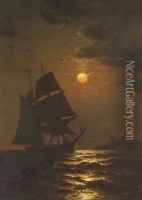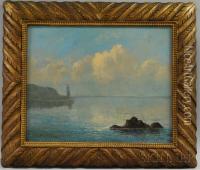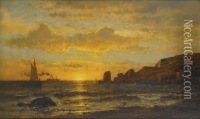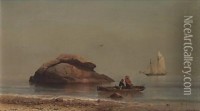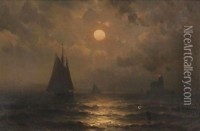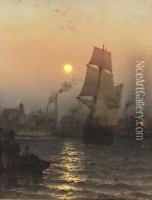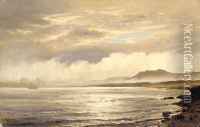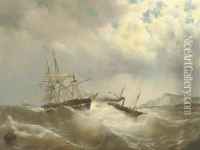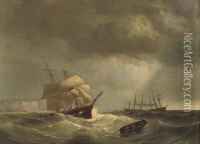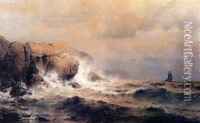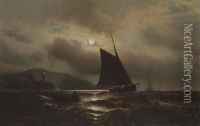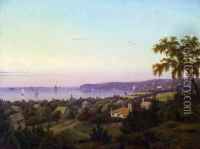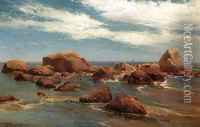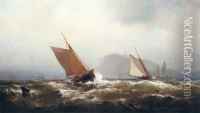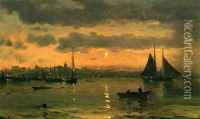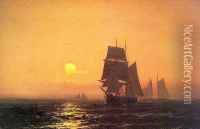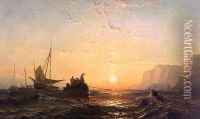Mauritz F. H. de Haas Paintings
Mauritz Frederick Hendrik de Haas was a prominent marine painter known for his skillful depiction of ships and the sea. Born on December 12, 1832, in Rotterdam, Netherlands, de Haas was exposed to maritime life from an early age, which greatly influenced his artistic direction. He studied art at the Academy of Fine Arts in Rotterdam and later continued his education under the guidance of the famous seascape artist Louis Meijer.
At the height of his early career in the Netherlands, de Haas developed a reputation for his meticulous and realistic portrayal of naval scenes. His work was characterized by intricate detail, a strong sense of atmosphere, and the dynamic representation of water.
Seeking broader horizons, de Haas moved to the United States in 1859 and settled in New York City, where he became associated with the Hudson River School, a mid-19th century art movement comprised of like-minded painters known for their romantic portrayal of the American landscape. Although de Haas maintained his focus on marine subjects, he was undoubtedly influenced by the school's emphasis on naturalism and the sublime.
His talent earned him membership in prestigious institutions such as the National Academy of Design, where he was elected an Associate in 1863 and a full Academician in 1867. De Haas's works were exhibited widely and garnered significant attention and acclaim during his lifetime. His paintings often featured scenes along the northeastern coast of the United States and occasionally the rugged landscapes of Scotland and England.
Throughout his career, Mauritz de Haas was commissioned by notable figures and institutions, and his works remain in important collections, including maritime museums and art galleries that specialize in 19th-century art.
Mauritz de Haas passed away on November 23, 1895, in New York City, leaving behind a legacy as one of the most respected marine artists of his time. His art continues to be appreciated for its contribution to the genre of maritime painting and its historical value in capturing the essence of 19th-century seafaring.
